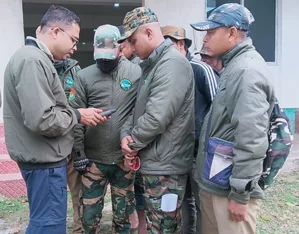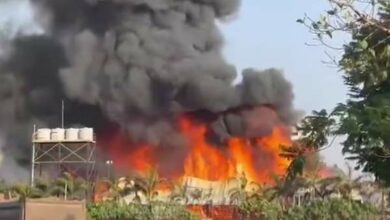Assam’s Forest and Wildlife officials receive GPS training for Elephant Estimation 2024
Guwahati, Feb 22 (IANS) – Assam’s Forest and Wildlife Department officials are undergoing GPS (Global Positioning System) training as part of the ongoing elephant estimation 2024 exercise. Experts from Guwahati-based biodiversity conservation organization “Aaranyak” are imparting GPS training to officials in different forest divisions. The elephant estimation exercise began on February 20 and will continue till February 27.
Aaranyak’s senior expert Arup Kumar Das stated, “We have shown GIS-based block maps of different ranges of Goalpara Forest Division. Approximately, 70 forest and wildlife officials attended the training. GPS hands-on training was provided to about 15 staff of the Goalpara Forest division with a practical session on uploading block boundaries in GPS.” Additionally, GPS training has been provided to officials in Tinsukia, Dibru-Saikhowa National Park, Kamrup, and Chirang Forest Divisions.
The GPS training is aimed at enhancing the ability to accurately record GPS locations of elephant sightings inside each estimation block, aiding in conservation efforts and habitat management. Aaranyak’s Secretary General and CEO Dr Bibhab Kumar Talukdar emphasized that the objective of the elephant estimation is to guide conservation efforts, assess population health, and formulate strategies for alleviating human-elephant conflicts.
According to the latest census in 2017, India is home to 27,312 elephants, with Assam housing the second largest pachyderm population of 5,719 elephants after Karnataka. The ongoing GPS training and elephant estimation exercise will play a crucial role in conservation and management efforts for the region’s elephant population.
In conclusion, the GPS training for forest and wildlife officials in Assam marks an important step in the ongoing elephant estimation 2024 exercise. The use of GPS technology and mapping will contribute to the accurate assessment and conservation of the region’s elephant population.
–IANS
sc/vd

 Patna University Murder Video: Student Harsh Raj Brutally Beaten To Death By Masked Men
Patna University Murder Video: Student Harsh Raj Brutally Beaten To Death By Masked Men Bobby Kataria Arrested For Human Trafficking; Other Pending Cases Against Him Explored
Bobby Kataria Arrested For Human Trafficking; Other Pending Cases Against Him Explored Indian Soldiers Won in Tug-of-War with Chinese Soldiers at UN Peacekeeping Mission in Sudan: Watch the Viral Video!
Indian Soldiers Won in Tug-of-War with Chinese Soldiers at UN Peacekeeping Mission in Sudan: Watch the Viral Video! Prajwal Revanna To Appear Before SIT On May 31, Apologize To Parents In A Video Release
Prajwal Revanna To Appear Before SIT On May 31, Apologize To Parents In A Video Release WATCH: AAP Punjab Minister Balkar Singh, in Obscene Video Call Viral; BJP and SAD Demand Action
WATCH: AAP Punjab Minister Balkar Singh, in Obscene Video Call Viral; BJP and SAD Demand Action New Footage Of The Tragedy At Rajkot’s Game Zone that killed 27 Emerges
New Footage Of The Tragedy At Rajkot’s Game Zone that killed 27 Emerges Pradhan Mantri Kaushal Vikas Yojana 2024 Online Application, Courses List, Eligibility Criteria and All You Need To Know
Pradhan Mantri Kaushal Vikas Yojana 2024 Online Application, Courses List, Eligibility Criteria and All You Need To Know Lakhpati Didi Yojana 2024: Online Application, Eligibility Criteria, Benefits and All You Need To Know
Lakhpati Didi Yojana 2024: Online Application, Eligibility Criteria, Benefits and All You Need To Know